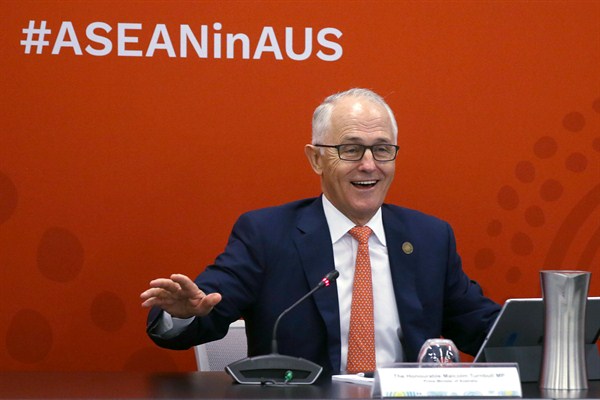Earlier this month, Australia hosted its first special summit with the Association of Southeast Asian Nations, the 10-member regional bloc known as ASEAN. While it is not a member, Australia has developed a close working relationship with the group. Amid discussions in Sydney focused on regional security and trade issues, Australian Prime Minister Malcolm Turnbull hailed ASEAN as a “strategic convener.” The two sides also unveiled a joint infrastructure initiative that looks to provide a potential alternative to China’s huge Belt and Road Initiative. In an email interview, Evan Laksmana, a senior researcher at the Centre for Strategic and International Studies in Jakarta, Indonesia, discusses how ASEAN fits into Australia’s regional foreign policy and the obstacles that could stand in the way of greater cooperation.
WPR: What is driving Australia’s closer alignment with ASEAN, and how does this fit into Australian foreign policy in Asia?
Evan Laksmana: Canberra’s foreign policy in the region can be broken down into three levels—the regional, the bilateral and the multilateral. Each one offers different strategic interests, opportunities and challenges. At the regional level, Southeast Asia has a combined population of 620 million people, as well as a cumulative $2.6 trillion economy growing at more than 5 percent every year. This market offers Australia a huge economic opportunity in the long run and provides it with its geostrategic connection to the broader Indo-Pacific.

